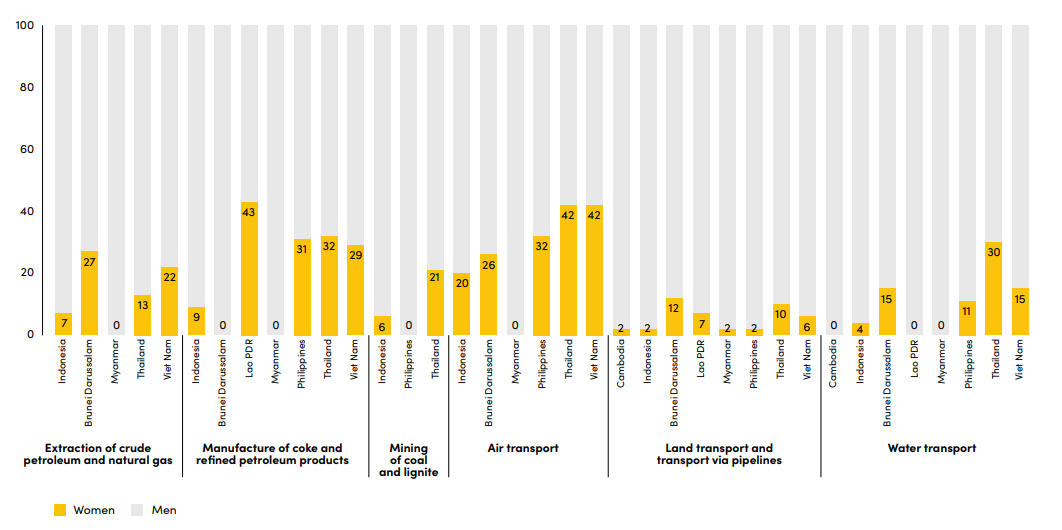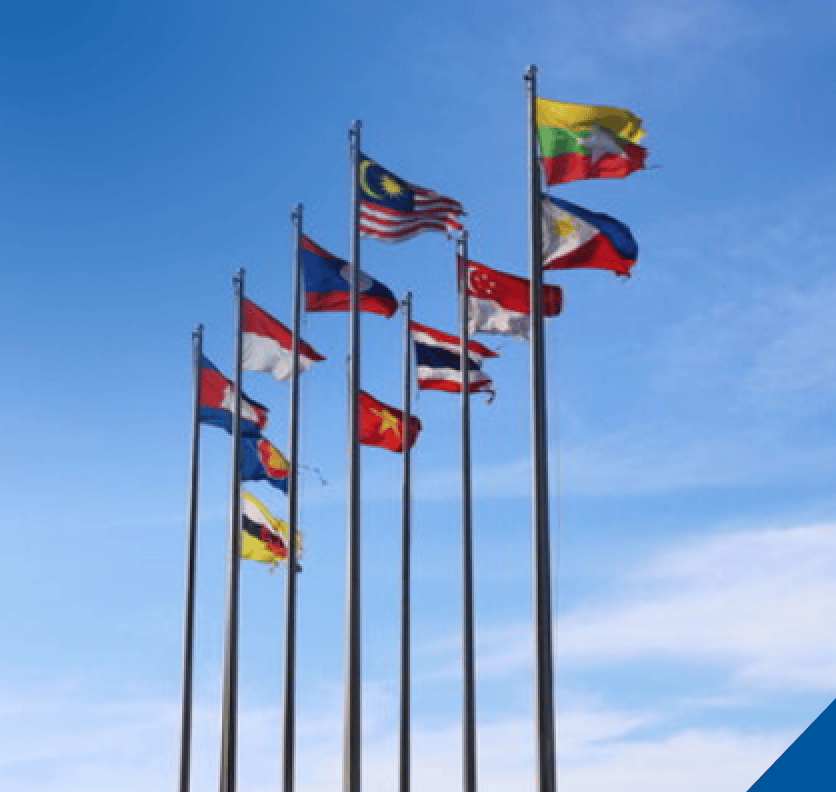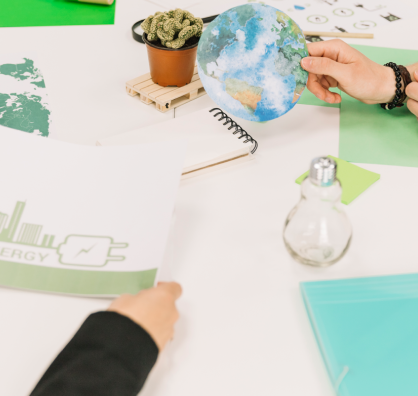[vc_row css=”.vc_custom_1565542682041{margin-right: 0px !important;margin-left: 0px !important;}”][vc_column css=”.vc_custom_1565542696462{padding-right: 0px !important;padding-left: 0px !important;}”][vc_single_image image=”13231″ img_size=”1440X330″ el_class=”banner-event”][/vc_column][/vc_row][vc_row css=”.vc_custom_1565542751414{margin-right: 0px !important;margin-left: 0px !important;}”][vc_column width=”1/4″][/vc_column][vc_column width=”1/2″ css=”.vc_custom_1565622195563{padding-bottom: 50px !important;}”][vc_column_text el_class=”title-event”][post_title][/vc_column_text][vc_column_text el_class=”author-pers”]By Khansa Fay’i Safira, Indira Pradnyaswari and Aldilla Noor Rakhiemah [/vc_column_text][vc_column_text el_class=”date-venue-news”][post_date][/vc_column_text][vc_column_text el_class=”text-par-news”]
In the era of globalization, gender equality has been making significant strides in various fields, especially in the energy sector. Women who were once seen as possessing limited skillsets and unable to make decisions regarding their education and careers are now essential players in the decision-making process in energy transition. However, a study on gender equality from ASEAN Gender Outlook illustrates significant gender inequality in the energy generation from crude oil, petroleum, and natural gas. This figure shows that only 8% women workers are involved and receive direct benefits.

Figure 1. Proportion of people involved in the fossil fuel energy sector by sex
Source: ILO database, available at https://ilostat.ilo.org/data/
Demographically, the population in Southeast Asia reached 672 million people in 2022. The rapid population growth must be supported with the increasing standard of education level. In 2019, Southeast Asia had 7,000 higher education institutions with the estimation of 12 million students and various fields of education including science and technology. As this number increases, it also opens wider possibilities for women to pursue further education in the energy sector. Opportunities to get a green job in ASEAN’s energy sector is often determined by educational background. This statement is reinforced by a collaborative research project conducted by the Asian Development Bank (ADB) and the Education University of Hong Kong (EdUHK), which concludes that there is a strong correlation between education and green jobs opportunity.
This opportunity also has the potential to foster great female leaders in the energy field. As the President Director of PT Pertamina (Persero), the state oil and natural gas mining company in Indonesia, Nicke Widyawati ensured the accessibility of energy in Indonesia during the Covid-19 pandemic which succeeded in reducing imports and providing cleaner energy to her home country.
In the field of research and academics, Oulavanh Sinsamphanh took on multiple roles as the Head of Lecturer and Researcher of the Postgraduate Division, co-founder of the Eco-Campus Project at the Faculty of Environmental Sciences, National University of Laos, and was also involved as the project coordinator for the environmental impact and assessment training under the “Second Lao Environment and Social Project (LENS II)” in collaboration with the World Bank.
The incredible achievements of these trailblazing women are a testament that educational background is a critical factor to a better career path in the energy sector. However, the accessibility and quality of education in other regions is still varied and women nevertheless face numerous barriers in receiving a formal education. Yet, does this limitation ultimately hinder women’s aspirations in renewable energy transition?
Undeterred by the limited access of formal education, some women are enthusiastically fighting to spread knowledge of renewable energy through several community-based experiences. The importance of women in renewable energy is not limited to becoming executive board members of certain institutions, but also takes place on the ground in local communities. Women are pioneers in building a sustainable social environment for energy transition and innovations. Despite the insufficient education in their area, underprivileged women have tangible strategies to create a greener energy environment, and their optimism towards empowering their local communities to achieve sustainability remains strong.
- The Presence of Bio Energy on Enhancing Households Activities
The fast deployment of bioenergy among the ASEAN community has been developing at a remarkable pace. The rapid production in bioenergy, particularly on biomass is becoming a promising energy source in developing countries. In this case, traditional biomass is primarily used for cooking fuels, such as wood, charcoal, crop residues, and animal dung. Since household activity is highly related to the multiple roles of housewives, they are not directly involved in the technical or research circumstances of renewable energy. However, they nevertheless take a prominent role as the primary consumer who spreads awareness to use biomass as a new energy source. A progressive step for bioenergy utilization has been implemented in Cambodia: 70% of the energy supply is represented by biomass-energy and accounts for more than 90% of the biomass-energy demand. Therefore, Cambodia-based organizations, namely GERES, built an education platform that focuses on alternatives and sustainable fuel knowledge and implementation that is made up from biomass residues. The program was later called “The Improved Cookstoves Producers and Distributors Association of Cambodia (ICoProDAC)” which is also known as the main entity driving the Cambodian Improved Cookstoves (ICS) market. Notably, 70% of ICoProDAC producers are underprivileged women in the education sector. The group is further divided into two categories; women entrepreneurs and women end-users. Both groups encourage women to take responsibilities in the business sectors in order to have better opportunities to defend in their specific interests. On the other hand, women end-users are defined as women consumers who benefit from efficient cooking solutions and cost reduction from the energy transition. From Cambodia, we learn that bio-energy has successfully been developed and benefits women in the local community.
- The Role of Women in Solar Energy Deployment
Solar development has numerous groups of local communities in ASEAN. Several programs have actively involved housewives as the main driver to accelerate solar energy transition. In Indonesia, there is a specific women community program that is handled by Kopernik, namely “Wonder Women”. This program empowers women to have basic entrepreneurial skills by selling technologies such as solar lights, water filters, and clean cookstoves among local communities. The net earnings from each sale will become additional income to support their household’s needs. In this program, women have the responsibility as the main distributor for renewable energy tools. Since 2011, there are 600 Wonder Women who have sold more than 27,000 clean energy technologies to more than 120,000 people in some regions in Indonesia with lack of access to electricity, clean water, and modern cooking methods. In another region, Do Thi Phuong, a Vietnamese housewife is developing solar-powered chicken incubation and ventilation equipment. Remarkably, the cost for electricity such as for heating, ventilation, and lighting for the chickens will amount to almost zero with the solar system. Moreover, the green chicken coops have completely supported 300 women farmers across Vietnam. This opportunity not only benefits women on renewable energy, but also discovering new business models for livestock rearing, agricultural product processing, and drying process for dried products. Another powerful woman comes from Cambodia: Thida Kheav, the founder of Solar Green Energy Cambodia (SOGE) has been showing her optimistic perspective toward solar deployment in Cambodia. She works hard on building more accessible uses of green energy in rural areas. As per today, SOGE provides high quality standard products and services for the solar system.
These activities are evidence of women’s vital involvement in renewable energy generation, distribution, and utilization. As one of the focus points on SDGs number 5 about Gender Equality, women’s participation in the energy sector will boost opportunities for leadership roles at all levels of decision-making. Every woman has an equal right to education and being involved in multi-sectoral projects. To continue garnering wider participation from women participants, it is necessary for stakeholders to provide suitable facilities that promote opportunities for women to gain knowledge of renewable energy in both technical and non-technical practices. Through regular training and workshops on the energy sector, women can continue their pivotal role in energy transition among ASEAN member states.
As Michelle Obama said, there is no limit to what we, as women, can accomplish.
The views, opinions, and information expressed in this article were compiled from sources believed to be reliable for information and sharing purposes only, and are solely those of the writer/s. They do not necessarily reflect the views and opinions of the ASEAN Centre for Energy (ACE) or the ASEAN Member States. Any use of this article’s content should be by ACE’s permission. [/vc_column_text][vc_column_text el_class=”photo-caption-news”][/vc_column_text][/vc_column][vc_column width=”1/4″][/vc_column][/vc_row]











